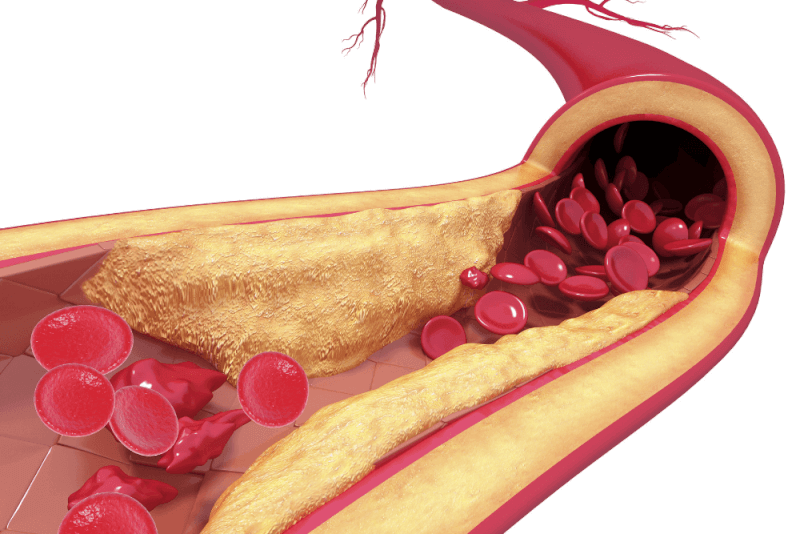What is Aortic Valve Stenosis?
Aortic valve stenosis is when the aortic valve opening is closed and blood flow is blocked. This condition, also called aortic stenosis, causes the heart to work more strongly. If the heart beats more strongly than it should, it causes thickening of the wall muscles in the left main pumping focus of the heart. The narrowing of the valve also reduces the amount of blood flow to the main artery.
Symptoms of Aortic Valve Stenosis
Aortic valve stenosis is usually asymptomatic. This is why it is discovered during routine examinations. Aortic valve narrowing causes symptoms only once and only as it progresses. If the disease has reached the symptomatic stage, there is a severe narrowing. If the disease is symptomatic, patients experience the following symptoms:
- Fainting
- Absence of energy,
- Pain in the chest during exertion,
- Breathing difficulties,
- Weak pulse,
- Atrial ventricular fibrillation,
- Cardiomegaly,
- Heart palpitations or abnormal rhythm,
- Heart murmur
Aortic valve stenosis in infants and children has different symptoms. These symptoms include easy fatigue, not eating well and not losing weight. In severe cases, babies have significant breathing difficulties. In babies with mild cases, the condition can become serious as they grow older.
Grades of aortic valve stenosis
In adults, the aortic valve area is 3 to 4 cm. For hemodynamic symptoms to be seen, this area needs to be reduced to approximately one quarter.
Grade 1 Light
First-degree aortic valve stenosis is usually asymptomatic and does not require any treatment. These patients remain under surveillance.
Grade 2 Medium
At this stage, some symptoms start to appear. However, patients are still monitored without treatment.
Grade 3 Serious
Third degree aortic valve stenosis presents the most serious clinical picture. Serious health problems arise and surgical intervention is required.
Causes of Aortic Valve Stenosis
The most common cause of aortic valve stenosis is calcium deposits in the heart valve. The cause of calcium accumulation is atherosclerosis. In addition, aortic valve stenosis can also be caused by congenital abnormalities.
Other causes of aortic valve stenosis are;
- Degenerative diseases,
- Mönckeberg disease
- Bicuspid aorta
- Acute joint rheumatism,
- Paget's disease,
- Chronic renal failure,
- Xanthomatous tendinal hypercholesterolemia occurs.
Genetics
Aortic valve stenosis is a disease that can be present from birth. If this happens, the aortic valves are irregularly formed. Children born with aortic valve stenosis usually have the following irregularities:
- The brooches are thick enough not to open and close completely,
- Brooches cannot be separated properly,
- Absence of all three brochures,
Rheumatic Fever
Rheumatic fever, one of the most common causes of heart valve problems, also causes aortic valve stenosis. Caused by Streptococcus bacteria, this disease is also contagious.
Calcification of Valves
Aortic valve stenosis is most common in older adults. Calcification from aortic valve scars usually starts after the age of 60 and the effects are seen between the ages of 70 and 80.
Risk Factors Affecting Aortic Valve Stenosis
Aortic valve stenosis is more common in certain risk groups.
Gender
In men between 30 and 60 years of age, aortic valve stenosis is more common.
Genetics
It is more common in children with malformed or less than three leaflets.
Disease
Rheumatic fever can cause significant problems with heart valves. The damage caused by the disease includes damage to coronary arteries, valves and heart tissue.
How is Aortic Valve Stenosis Diagnosed?
Chest X-rays, electrocardiography and echocardiography are used to diagnose aortic valve stenosis. Cardiac catheterization is used to determine the degree of stenosis.
MRI
Aortic valve stenosis can be clearly visualized with MRI, which provides detailed imaging of internal body structures.
CT Scan
This method, in which cross-sectional images of the internal structures of the body are obtained, is also used in the diagnosis of the disease.
Lung X-ray
Images of the heart, lungs, respiratory tract, bones and vessels are taken to support the diagnosis.
Echocardiogram
It is a method that allows video images of the heart to be taken.
Cardiac Catheterization
is a diagnostic method using a special dye to identify blockages in the heart.
Aortic Valve Stenosis Treatment
Aortic valve stenosis can be treated with surgery. Some patients undergo surgery to widen the narrowing, while others undergo heart valve replacement. In addition, medication can be used depending on the cause of the disease.
Drug Treatments
Although the medications used in aortic valve stenosis do not cure the disease, they help to reduce the symptoms experienced by patients. The first group of medicines used are antibiotics. It is used to stop the progression of rheumatic fever and infections.
Blood pressure medications are medicines used to lower blood pressure. Some patients may require blood thinners. Finally, anti-rhythmic drugs are used to regulate heart rhythms.
Aortic Valve Stenosis Surgery
Various methods are used to treat the damaged valve. The minimally invasive method used is called valvuloplasty. In this technique, it is done with a soft and thin tube called a catheter. The procedure is performed by entering the main artery in the groin. A catheter with a balloon at the tip is advanced to the heart, where the balloon is inflated. After the valve is opened, the catheter is removed.
If the damaged valve needs to be removed, then open heart surgery is performed. In this surgery, patients' damaged valves are replaced with a mechanical or pig-derived valve. The recovery period is extremely long.
Summary of Surgery
Duration of Surgery 2-4 hours
Anesthesia Method: General
Hospitalization Period: 5-7 Days
Return to Work Time: 6-8 Weeks
Long-term effects of treatment
Treatments for aortic valve stenosis are highly successful. For this reason, the general health of patients improves significantly in the long term.
Lifestyle Changes in Aortic Valve Stenosis
If aortic valve stenosis is not a congenital condition, then some lifestyle changes can reduce the burden on the heart and make you healthier. Here are the changes that patients need to go through for this.
- Exercise regularly,
- Following a diet low in saturated fat,
- Staying away from cigarettes,
- Being at an ideal weight,
- To ensure oral hygiene,













C** L** | 21 Feb 2025